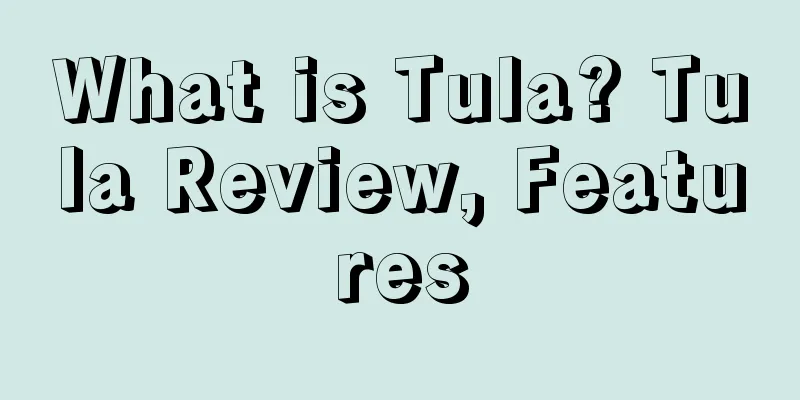What is the United States Patent and Trademark Office (USPTO)? United States Patent and Trademark Office (USPTO) Review, Features

|
The United States Patent and Trademark Office (PTO or USPTO), established in 1802, is an agency under the U.S. Department of Commerce. It is primarily responsible for providing patent protection, trademark registration, and intellectual property certification for inventors and their related inventions.
Main Functions The main functions of the USPTO include: 1. Patent authorization and trademark registration; 2. Provide services to inventors related to their patents or inventions, product and service identification; 3. Manage patent, trademark and trade-related intellectual property rights by implementing laws related to patents and trademarks, and make relevant policy recommendations to the President and the Secretary of Commerce to provide advice and suggestions for strengthening the country's economic strength; 4. Provide advice and assistance to the Ministry of Commerce and other agencies on intellectual property matters; 5. Help and support innovation and national scientific and technological development by preserving, classifying and disseminating patent information.
Organizational Structure As one of the 14 subordinate bureaus of the U.S. Department of Commerce, the USPTO is a non-commercial entity. The director is appointed by the president after approval by the U.S. Senate and concurrently serves as the deputy secretary of the Department of Commerce in charge of intellectual property affairs. Based on the director's nomination, the secretary of Commerce appoints an assistant deputy secretary of the Department of Commerce in charge of intellectual property affairs to serve as the deputy director of the USPTO. The USPTO has the following organizational structure: 1. Patent Office: responsible for patent examination and related affairs. It consists of Inventor Assistance Program Office, Patent Examination Policy Department, Patent Business Department and Patent Resources and Planning Department. 2. Trademark Office: responsible for trademark registration and related affairs. It consists of the Trademark Examination Policy Department and the Trademark Business Department. 3. General Counsel Department: The main tasks are to serve as the legal counsel of the Director, handle complaints against recruitment and training decisions, provide legal advice, conduct legal reviews of various decisions made by the USPTO, and defend the USPTO in the Special Administrative Court. It consists of the Common Law Office, the Intellectual Property Law and Lawyer Office, the Patent Appeal and Conflict Committee, the Trademark Trial and Appeal Committee, and the Personnel Recruitment and Training Office. 4. International Department (foreign affairs department): responsible for contacting Congress, handling international affairs and safeguarding the legitimate rights and interests of American intellectual property holders worldwide. It consists of the Congressional Relations Department, the International Relations Department and the Law Enforcement and Rights Protection Department. 5. Administrative Management Department: Responsible for USPTO human resources, cooperation plans and management services. It consists of the Office of Civil Rights, the Office of Human Resources and the Office of Administrative Services. 6. Finance Department: Responsible for financial planning, management and procurement affairs. It consists of Planning Office, Finance Office, Financial Management System Office and Procurement Office. 7. Information Department: responsible for formulating strategic information plans and operating budgets; developing and maintaining automated information systems; managing computer facilities, equipment and communication networks; providing technical and technical development direction guidance for rebuilding business processes; providing policy guidance to affiliated institutions, etc. It consists of the Office of the Deputy Chief Information Officer, the Office of System Development and Maintenance, the Office of Customer Information Services, the Office of IT Business and Customer Support Services, and the Office of Structural, Engineering and Technical Services. 8. Patent Public Advisory Committee and Trademark Public Advisory Committee: Responsible for providing USPTO with advice on patent and trademark budget and management; responsible for reviewing the USPTO's implementation of policies, goals, performance, budget and fee income; providing advice to the Director on the above matters, and preparing an annual report within 60 days after the end of each fiscal year and submitting it to the President, the Secretary of Commerce and the Congressional Judiciary Committee.
Trademark Type The current U.S. Patent Law divides patents into three types: invention patents, design patents and plant patents, and the protection period is 20 years from the date of application. Letters, words, names, symbols, designs, or any combination of them can be applied for registration as a U.S. trademark.
Required documents 1. If you are a legal person applying, please attach a copy of your business license or valid registration certificate with the official seal; if you are a natural person applying, please attach a copy of your personal identity document. 2. Detailed information of the applicant (in Chinese and English), including name, nature, nationality, detailed address, zip code and contact information. 3. Electronic version of trademark sample. 4. Product name and category. 5. The applicant shall submit a statement of bona fide use of the trademark, indicating on what products or services the trademark will be used (intended use). 6. The applicant shall provide a statement of genuine use of the trademark in commerce (actual use).
Patent application approval process The inventor or his authorized person submits the application → the USPTO acceptance department receives it, determines the date of receipt and gives an application number → the application department conducts a formal review and determines the application date, completes document processing and data collection, and the rights transfer department handles matters related to rights transfer → classification → the application is assigned to the examination department for examination according to the classification number. The examination process mainly includes: 1) formal examination and search; 2) substantive examination; 3) applicant's response; 4) re-examination; 5) making a final decision, etc. → If you are dissatisfied with the decision, you can appeal to the Patent Appeals and Interferences Board. Before the 1999 amendment, the U.S. Patent Act stipulated that patent applications would not be published before they were granted, and the USPTO was responsible for keeping them confidential. In order to be consistent with the General Agreement on Tariffs and Trade, the 1999 revised U.S. Patent Act stipulated that patent applications should be published immediately after 18 months from the filing date or priority date, and the applicant may also request early publication.
Development History -The United States Constitution, promulgated in 1787, established the federal system of the United States. One of the legislative powers granted to Congress in Article 8 is: "To promote the progress of science and useful arts, by securing for limited times to writers and inventors their writings and discoveries, patents for limited times." -The first patent law, enacted on April 10, 1790, was called "An Act to promote the progress of useful Arts" (abbreviated as "Patent Act of 1790"). -In 1793, a new law replaced the patent examination system with a patent registration system. The Patent Committee was abolished, and the granting of patent rights was no longer subject to examination of novelty and practicality, as long as the formal requirements were met. -The Patent Act of March 3, 1837, requires inventors to prepare two copies of drawings when applying for a patent, which should be kept separately, one to be recorded in the files of the Patent Office and the other to be attached to the authorization document to prevent it from being destroyed by fire. -In 1849, the Patent Office was transferred from the State Department to the Department of the Interior. - In 1850, a historic development was the introduction of the concept that an invention must not only be new and useful but also non-obvious in order to be patentable. -The Patent Act of August 30, 1852, which established the jurisdiction of the patent granting system by allowing patent applicants whose applications were rejected by the Patent Office to appeal to any judge of the United States District Court for the District of Columbia. - In 1861, several changes were made to the Patent Act. The most important of these changes included the appointment of three chief examiners to hear a review of any application that had been rejected twice by the primary examiner. -In 1866, in Suffolk Mfg Co v. Hayden, the Supreme Court made a precedent regarding double patenting. The court ruled that if the same inventor held two patents for the same invention, the second patent was invalid. -In 1897, some statutes regarding the granting of patent rights were amended: a. If a foreign patent has been granted, a U.S. application must be filed within 7 months of the foreign patent application being filed, and b. Clarified that the term "public knowledge or use before the applicant completed the invention" limits facts that occurred in the United States. -In 1925, the Patent Office was transferred to the Department of Commerce and Labor. -In 1930, the Plant Patent Act was enacted to provide patent protection for asexually propagated plants. -In 1941, in Cuno Engineering v. Automatic Devices Corp., the Supreme Court held that a patentable invention must "display a spark of creative genius and not merely a technical skill." -In 2008, the United States began to implement the "Memorandum on Transparency and Open Government", opening government data and information to the public and third-party organizations through platforms such as Data.gov. -In 1946, the Patent Act was amended to reverse the Supreme Court's decision in Electric Storage Battery v. Shimadzu and apply the "first to invent" principle of U.S. law worldwide. -In November 2000, the USPTO was established as a performance unit under the Department of Commerce under the American Inventor Protection Act, operating in a more commercial manner and enjoying substantial autonomy in personnel, procurement, budget and other administrative functions. -Since June 2010, the USPTO has been working with Google and since June 2013 with Reed Tech, a subsidiary of LexisNexis, to provide free patent data download services to the public. -According to information released by the United States Patent and Trademark Office (USPTO), starting from January 14, 2017, the official fees for U.S. trademarks will increase significantly. In addition, the fees for most items such as Madrid applications designating the United States, submission of evidence of use, and renewal have been increased to varying degrees. |
<<: What is APO/FPO? APO/FPO Review, Features
>>: What is USPTO? USPTO Review, Features
Recommend
Foreigners are addicted! They spend an average of more than 20 minutes a day on Temu
Mobile consumer intelligence company GWS Amplify ...
The full-hosting model, honey or poison for Chinese sellers?
In 1776, Adam Smith, the founder and pioneer of c...
What is Horizon Therapeutics? Horizon Therapeutics Review, Features
Horizon Therapeutics We are Horizon Therapeutics,...
21 SEO Statistics for Sellers
But why do sellers do SEO? The following series o...
What is Youfa Barley German Overseas Warehouse? Youfa Barley German Overseas Warehouse Review, Features
Youfa Barley German Overseas Warehouse establishe...
What is Shopee Knowledge Bureau? Shopee Knowledge Bureau Review, Features
As an agency under the Southeast Asia Knowledge Bu...
What is Jixin International? Jixin International Review, Features
Jixin International (Shenzhen Jixin International ...
What is Fuego Box? Fuego Box Review, Features
Fuego Box is a hot sauce lover's subscription...
Spider-Man becomes an influencer online, sales of peripheral products in Australia surge 338%
Spider-Man has become the new online influencer w...
Spain's e-commerce market is expected to grow by 24% this year
On July 20, according to foreign media reports, t...
What is Shenzhen Electronic Commerce Service Center? Shenzhen Electronic Commerce Service Center Review, Features
Shenzhen E-Commerce Service Center Co., Ltd. (her...
What is Digital Power Network? Digital Power Network Review, Features
Shuli Network (Shanghai Shuli Network Technology C...
What is Ship Angle? Review, Features
Ship Angle's US overseas warehouse is located...
Temu seller's product suddenly failed the quality inspection, and 80% of the returned goods were scrapped
Under the banner of allowing everyone to shop lik...
What is Haichuang Incubator? Haichuang Incubator Review, Features
Haichuang Incubator (Haining Haichuang Incubator C...









